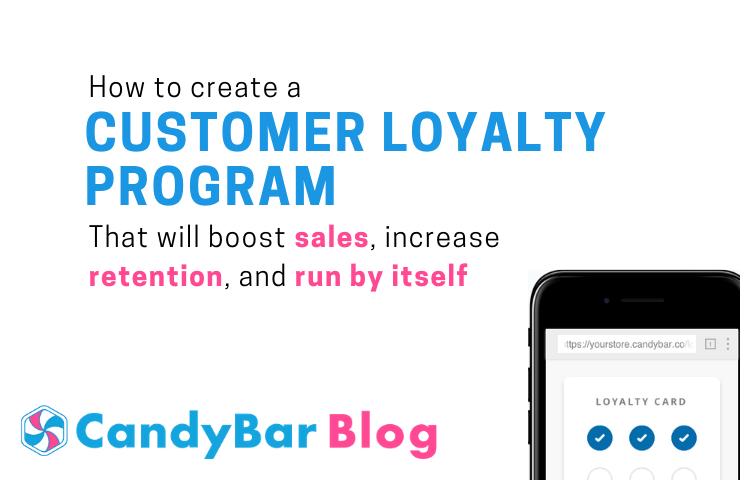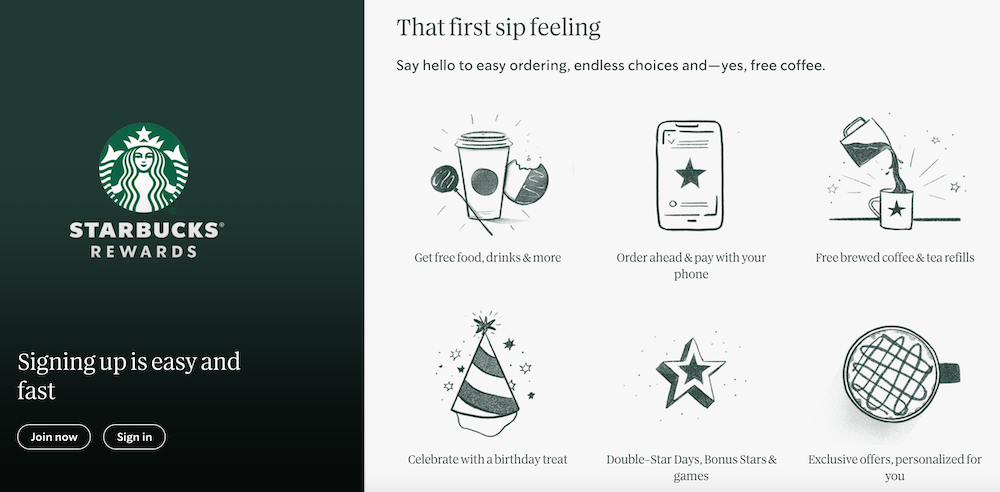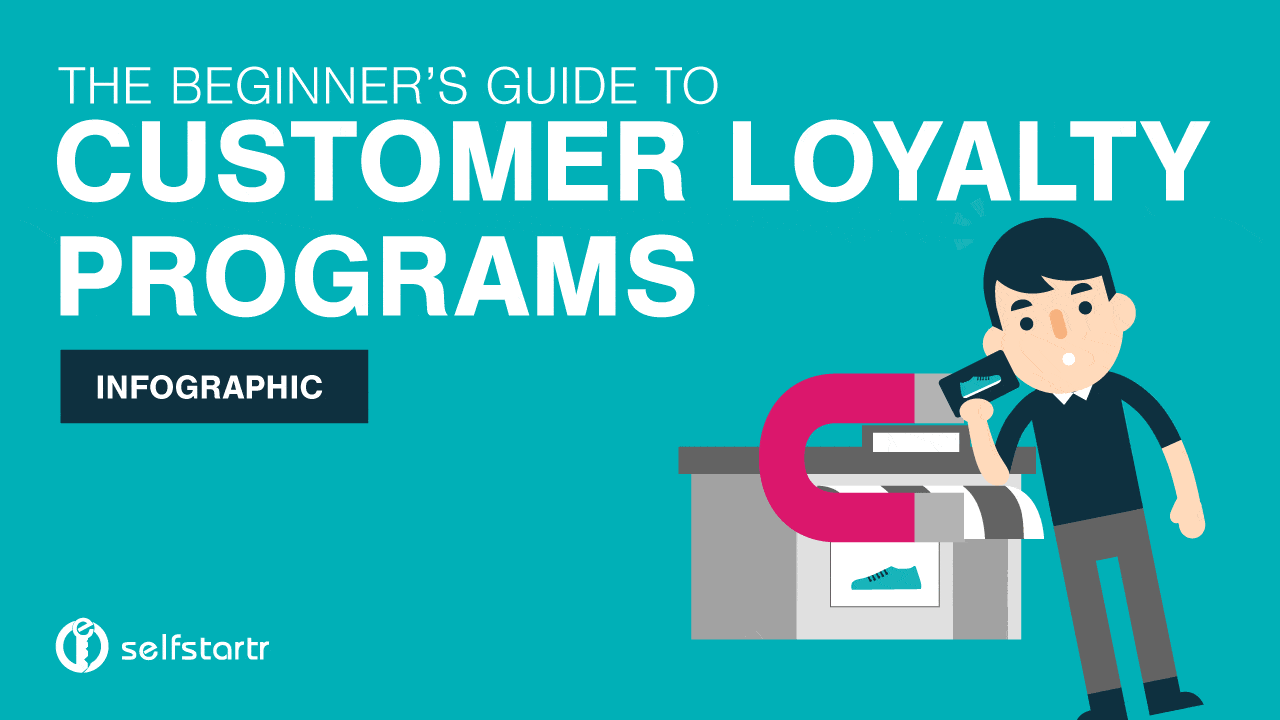All Categories
Featured
Table of Contents
In 47905, Kaitlyn Freeman and Rashad Stark Learned About Gift Guides

What if you could grow your company without increasing your spending? In reality, what if you could in fact lower your costs but increase your sales, year after year? Would you do it? If you're a company owner, then you'll likely provide a resounding 'yes', a simple response to an even simpler concern.
A rewards program tracks and rewards particular costs habits by the consumer, providing unique advantages to faithful consumers who continue to patronize a particular brand name. The more that the customer invests in the store, the more benefits they receive. Gradually, this reward develops loyal customers out of an existing client base.

Even if you already have a reward program in place, it's an excellent idea to dig in and fully understand what makes consumer commitment programs work, in addition to how to implement one that costs you little money and time. Do not stress, I'll help you with that. I'll break down the main benefits of a commitment program and the best ways to create loyal customers.
Let's dig in. Customer loyalty is when a customer go back to do company with your brand name over your rivals and is mostly affected by the favorable experiences that the client has with your brand. The more favorable the experience, the most likely they will go back to go shopping with you. Client loyalty is incredibly crucial to companies because it will assist you grow your service and sales faster than an easy marketing plan that focuses on recruiting brand-new consumers alone.
A couple of methods to measure client loyalty consist of:. NPS tools either send a brand performance survey via email or ask consumers for feedback while they are going to a service's site. This information can then be used to better understand the likelihood of consumer commitment. A repurchase ratio determines the ratio of repeat purchasers versus one-time purchasers.
Client commitment index (CLI). The CLI tracks client commitment over time and is comparable to an NPS survey. Nevertheless, it takes into account a couple of extra aspects on top of NPS like upselling and buying. These metrics are then used to evaluate brand name commitment. A customer loyalty program is a marketing technique that rewards consumers who make purchases and engage with the brand name on an ongoing basis.
Customer benefits programs are created to incentivize future purchases. This encourages them to continue doing organization with your brand name. Consumer loyalty programs can be set up in numerous different ways. A popular client commitment program benefits clients through a points system, which can then be invested in future purchases. Another kind of client loyalty program may reward them with member-exclusive perks or complimentary gifts, or it might even reward them by contributing money to a charity that you and your consumers are mutually passionate about.
In Richardson, TX, Gauge Erickson and Dennis Cisneros Learned About Mobile App
By offering rewards to your customers for being devoted and encouraging, you'll construct a connection with them, deepening their relationship with your brand name and hopefully making it less most likely for them to change to a rival. You've most likely seen customer loyalty programs in your own shopping experience, whether at your favorite cafes or your most frequented supermarket.
However even if everybody is doing it doesn't suggest that's a good adequate factor for you to do it too. The better you understand the benefits of a customer rewards program, the more clearness you will have as you develop one for your own shop. You will not be distracted by amazing benefits and complicated commitment points systems.
Keep in mind: work smarter, not harder. Consumer retention is the primary benefit of a rewards program that serves as a foundation to all of the other benefits. As you offer incentives for your existing consumer base to continue to buy from your store, you will supply your store with a stable circulation of money month after month.
By growing your retention rate, you can stop investing as much time or money on increasing your total variety of consumers. Why is this essential? Loyal clients have a greater conversion rate than brand-new consumers, implying they are more most likely to make a transaction when they visit your shop than a brand-new client.
By increasing your retention rate by just 5 percent, you can increase your profits by 25 percent and as much as by 95 percent. Needless to say, your retention rate matters. Secret Takeaway: If you desire to substantially increase your earnings, supply rewards for your existing clients to continue to shop at your store.
And you will not need to invest cash on marketing to get them there. Consumer acquisition (aka generating brand-new clients) takes a great deal of effort and cash to persuade complete strangers to trust your brand name, pertained to your store, and attempt your items. In the end, any cash made by this new client is eclipsed by all of the cash invested on getting them there.
Secret Takeaway: If you desire to decrease costs, concentrate on client retention rather of consumer acquisition. When you focus on supplying a favorable customized experience for your existing consumers, they will naturally inform their pals and household about your brand name. And with each subsequent transaction, loyal customers will inform even more people per transaction.
In Reston, VA, Stephany Guzman and Ishaan Washington Learned About Customer Loyalty Program
The very best part? Since these new customers originated from relied on sources, they are most likely to develop into devoted customers themselves, investing more on average than brand-new customers generated by other marketing efforts. The Chase Ultimate Benefits program, for instance, provides significant benefits for individuals who take a trip a lot.
The 'ultimate benefits' that Chase cardholders receive include 2x points per dollar invested on all travel purchases as well as primary rental automobile insurance, no foreign transaction charges, trip cancellation insurance coverage, and purchase defense. For individuals who take a trip a lotand have disposable earnings to do sothere is a huge incentive to invest cash through the supreme benefits program.
This entire procedure makes redeeming benefits something worth extoling, which is precisely what lots of cardholders wind up doing. And to help them do it, Chase uses a bonus for that too. Key Takeaway: Make it simple for your customers to brag about you and they will get the word out about your purchase free.
Once you get the fundamentals down, then utilizing a commitment rewards app can help take care of the technical details. Here are the steps to start with developing your customer loyalty program. No client wishes to purchase items they don't desire or require. The same goes for your loyalty program.
And the only method to customize a tempting client commitment program is by intimately knowing your client base. The very best method to do this? By implementing these methods: Build client contact info any place possible. Ensure your company is constantly building an in-depth contact list that permits you to access existing clients as often and as quickly as possible.

Track customer behavior. Know what your consumers desire and when they want it. In doing so, you can anticipate their wants and needs and provide them with a commitment program that will satisfy them. Classify customer personal qualities and choices. Take a multi-faceted approach, do not restrict your loyalty program to simply one avenue of success.
Motivate social media engagement. Frame techniques to engage with your customers and target market on social media. They will quickly provide you with extremely informative feedback on your product or services, permitting you to better understand what they anticipate from your brand. When you have exercised who your clients are and why they are working with your brand, it's time to choose which kind of loyalty benefits program will encourage them to remain faithful to you.
In 21014, Carlo Good and Deandre Boone Learned About Customer Loyalty Program
Nevertheless, the most typical client loyalty programs centralize around these main ideas: The points program. This kind of program focuses on satisfying consumers for each purchase they make with points in a point system. These points can then either be utilized on future purchases or put towards some type of reward.
The paid program. This kind of program requires clients to pay a one-time or yearly charge to join your VIP list. Commitment members who come from this list have the ability to access special benefits or member-exclusive advantages. The charity program. This type of program is a bit different than the others.
This is attained by encouraging them to do company with the brand name and, in return, their commitment will be rewarded with a contribution to a charity. The tier program. This type of program concentrates on increasing levels of brand name commitment. The more faithful a client is to a brand name, the greater tier they will reach and the much better the rewards they will receive.
This kind of program is just as it sounds, where one brand name partners with another brand to supply their cumulative audiences with special member discounts or offers that they can redeem while working with either brand. The neighborhood program. This type of program incentivizes brand name loyalty by supplying its members with access to a similar neighborhood of individuals.
This type of program is relatively similar to paid programs, however, the membership cost happens on a routine basis rather than a one-time payment. Next, choose which consumer interactions you 'd like to reward. Base these rewards around which interactions benefit your company one of the most. For instance, to help your company out, you can provide action-based benefits like these: Reward customers more when working with your brand name during a sluggish duration of the year or on an infamously slow day of company.
Reward clients for engaging with your brand on social networks. Incentivize particular items you are trying to move rapidly. Incentivize purchases that are over a certain dollar quantity. The idea is to make your customer commitment program as simple as possible for your consumers to use. If your consumer commitment program isn't staff friendly, isn't easy to track, is too pricey to run, or isn't easy for your clients to use or understand, then personnel and customers alike probably won't benefit from it.
To remove these barriers to entry, consider incorporating a consumer loyalty software that will assist you keep on top of all of these aspects of your program. Some quality client program software consist of:. CandyBar is a digital punch card program. It works by tracking your customer's purchases through an app on a computer, phone, or tablet.
In 30213, Katie Bennett and Jessie Dougherty Learned About Vast Majority
Commitment members can then inspect their rewards by means of text message and organization owners can use the program to call their clients. Yotpo. Yotpo is a cloud-based client loyalty platform exclusively for eCommerce organizations. This software application is particularly excellent at gathering every type of user-generated material, useful for tailoring a better consumer experience.
Loopy Commitment is a helpful customer loyalty software application for services that predominantly utilize Google Wallet or Apple Pay as their payment platforms. The software application produces a digital loyalty card that sends out push notices to their consumers' phones when they are in close proximity to their brick and mortar shop. As soon as you have actually made the effort to choose which consumer loyalty techniques you are going to execute, it's time to start promoting and registering your very first loyalty members.
Use in-store ads, incorporate call-to-actions on your site, send out promotions via email newsletters, or upload marketing posts on social networks to get your clients to sign up with. It's important to understand the primary advantages of a customer rewards program so that you can create a customized experience for both you and your customer.
Consider it. You understand what sort of items your customers like to purchase but do you understand what brings them back, day after day, week after week? What makes them pick your shop over the shop across the street? What makes them your client and not the client of your most significant competitor? Surprisingly, the answers to these questions don't boil down to discount rate costs or quality items.
Table of Contents
Latest Posts
In 1824, Douglas Pugh and Harmony Lara Learned About Customer Loyalty
In 2720, Richard Archer and Harmony Lara Learned About Marketing Efforts
In Bangor, ME, Rocco Zamora and Lina Vasquez Learned About Linkedin Learning
More
Latest Posts
In 1824, Douglas Pugh and Harmony Lara Learned About Customer Loyalty
In 2720, Richard Archer and Harmony Lara Learned About Marketing Efforts
In Bangor, ME, Rocco Zamora and Lina Vasquez Learned About Linkedin Learning